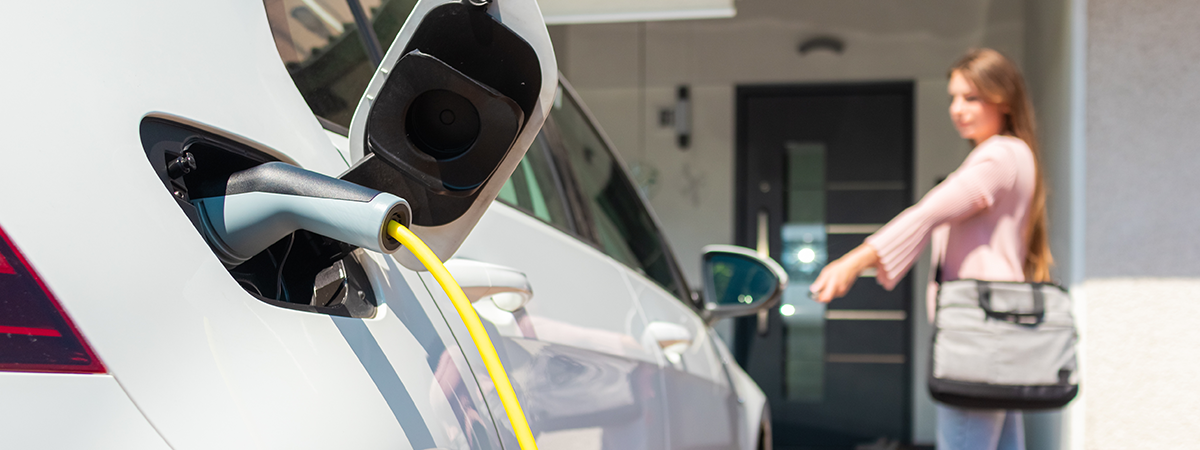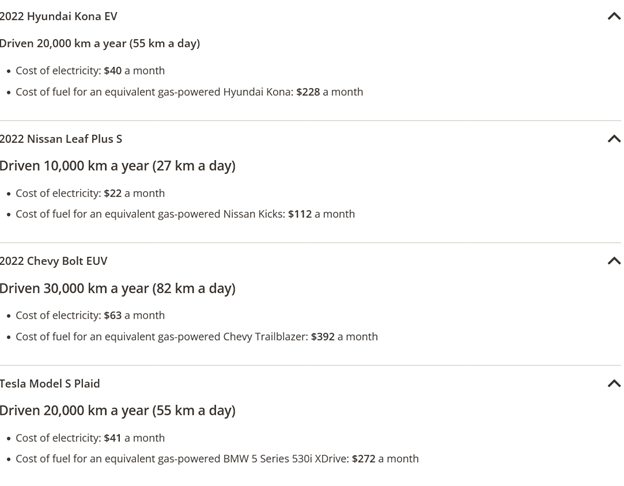
Electric vehicles (EVs) are growing in popularity each year, so we asked one of our EV charging experts for the most common questions he receives and what people interested in purchasing an EV should know.
1. How long will my EV take to charge?
The speed at which an electric vehicle can charge depends on the size of the charger used. There are three levels:
Level 1 Chargers are charging cords that plug directly into a regular 120V outlet. They typically charge a vehicle at a rate of 8km per charging hour, which is relatively inefficient. They can be adequate at a cottage or another location where a more powerful charger cannot be installed.
Level 2 Chargers can be 240V cords (like a stove or dryer) or a hardwired charger at your home. It charges a vehicle much quicker at 50-80km per charging hour. This is the most common way to charge for most drivers as it balances affordability, convenience, and speed all at home.
Level 3, or DC Fast Chargers, are found only at commercial locations. Tesla's Level 3 Chargers are called Superchargers. The fastest Level 3 charger can charge a vehicle at a rate of up to 300km in 18 minutes. Using a Level 3 charger is very fast but is often the costliest way to charge. Regular Level 3 charging has also been found to wear down the battery lifespan.
2. How much will it cost to charge my car?
This answer can vary widely based on factors like mileage, electricity rates, time of day of charging, the charger you use and more. A reasonable estimate would be about $6 to charge from “empty” to “full.” The type of charger used doesn’t impact costs much because it is the same volume of power drawn. The only difference is the speed at which the vehicle is charged.
One clear point is that charging at home and during off-peak hours is the most affordable strategy. Some public and commercial charging stations offer free charging, but in most cases, you will pay a higher rate than at home. It is abundantly clear, however, that charging an EV is much more affordable than conventional refueling, especially if you’re driving a higher-end vehicle that uses premium fuel or a vehicle that typically runs on diesel.
You can find a comparison of “refueling” costs in the accompanying photo, sourced from BCHydro.

3. How much do cold temperatures affect electric vehicles’ driving range?
Electric vehicles can lose some range in the winter. Just like your cell phone, during the winter, the power may degrade a bit from the cold. Hyundai is rolling out a battery-warming system that counteracts the cold in some trim options, but this is still an area of growing technology across the board.
A consumer report found that the battery distance range can drop by about 20% in colder temperatures, especially below 20° F (-7°C.) As the vehicle warms up, it can regain some distance back. The cold can also leech some power from the battery, which means keeping the vehicle on the charger is an effective way to keep the battery at the full range.
Charging an EV outside in the winter is the same as warmer weather charging. When shopping for a home charging unit, get a weatherproofed unit with a NEMA type 3R rating. This rating ensures that the unit will function inside or outside regardless of the weather.
4. Will the battery last?
In Canada, EVs typically come with an eight-year or 160,000km warranty for the battery, and they are expected to last 10-20 years. There is a push in the industry to continue improving battery life, but for now, here are some best practices:
- Park in sheltered places to minimize exposure to extreme hot and cold temperatures.
- Keep rapid charging to a minimum.
- Avoid charging to full capacity. Although it gives you max distance, it can diminish the battery over time.
5. Should I get a charging cable or a home charging unit?
Before getting an EV charger in your home, you’ll have to decide what type of charging system you want. Assuming you’d prefer quicker charging, you must decide between a Level 2 plug-in cable or a hardwired charging unit. Typically, EV drivers choose hardwired units as they are easier to use, charge more effectively, and possess helpful tech to inform you and protect your vehicle. Regardless of your choice, the additional draw of electricity on your power system may require an electrical service upgrade at your home. More on that in the next EV article coming out in January!
Until then, happy driving!
Have questions for Kraun Electric on EV charging? Join us on Tuesday, January 17th from 6:00pm – 7:30pm for CAA Niagara’s EV info session! Learn more here.
 Ontario
Ontario